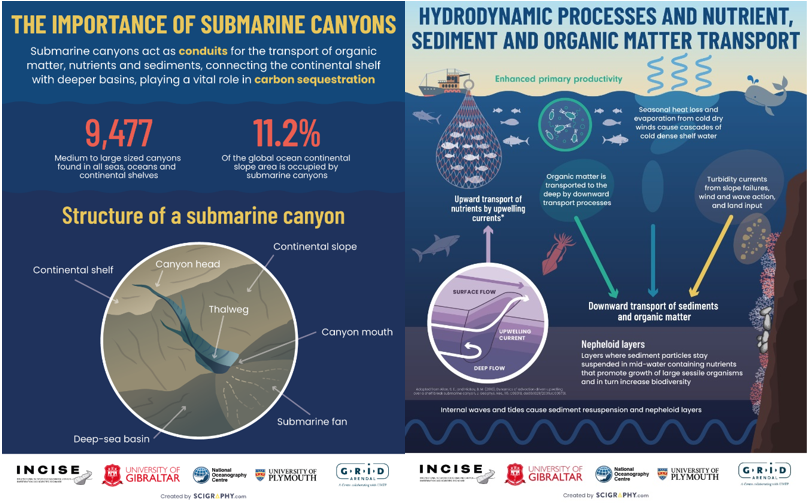FACTS
Factors influencing the Accumulation of organic Carbon and its Transfer in Submarine canyons. (FACTS)

Lead
Submarine canyons are ubiquitous geomorphological features of continental margins that serve as important pathways of water and material exchange between continental shelves and deep-sea basins. However, studies addressing their role in the marine carbon cycle, and specifically as sites of organic carbon (OC) accumulation, are scarce and paint a confusing picture. Some studies indicate that submarine canyons are hotspots for OC sequestration, making them important sites for climate regulation, while others suggest that these morphologies favor OC degradation, causing a loss of OC. For instance, some studies associate higher OC sequestration to the efficient transport of OC from productive coastal waters into the canyons, while others associate it to their connection to rivers, efficiently accumulating OC delivered to the ocean. In contrast, other studies show that the strong hydrodynamic processes occurring in these confined morphologies limit the deposition and accumulation of OC and rather enhance its degradation due to continuous sediment reworking. These contrasting findings reflect the specific and complex characteristics of the studied canyons (i.e., river-connected canyons, canyons on eutrophic margins, etc.) that render it challenging to discern the factors that influence the distribution of OC in submarine canyons at a global scale and to assess their importance with respect to climate regulation.
Objectives
The aim of this proposal is to elucidate the factors that govern the distribution and accumulation of OC in submarine canyons worldwide by performing a global analysis of 45 submarine canyons spanning diverse features and processes. This project will create the first dataset of the content and isotopic composition (13C and 14C) of sedimentary OC to determine the amount of OC accumulating in submarine canyons, as well as its origin (terrigenous or marine) and age (freshly deposited OC or aged OC due to continuous sediment reworking). These analyses will be performed in samples from 30 submarine canyons, whereas data from 15 extensively studied canyons will be extracted from available literature. This first-ever global dataset will allow to perform accurate spatial analyses, which, coupled with machine learning algorithms, will shed light on the factors that influence the distribution and accumulation of OC in these highly diverse and dynamic geomorphological features. Elucidating the prevailing characteristics that govern their capacity to accumulate OC within submarine canyons will help to better understand their role in the ocean carbon cycle, and identify potential hotspots of OC sequestration to inform measures for their conservation.